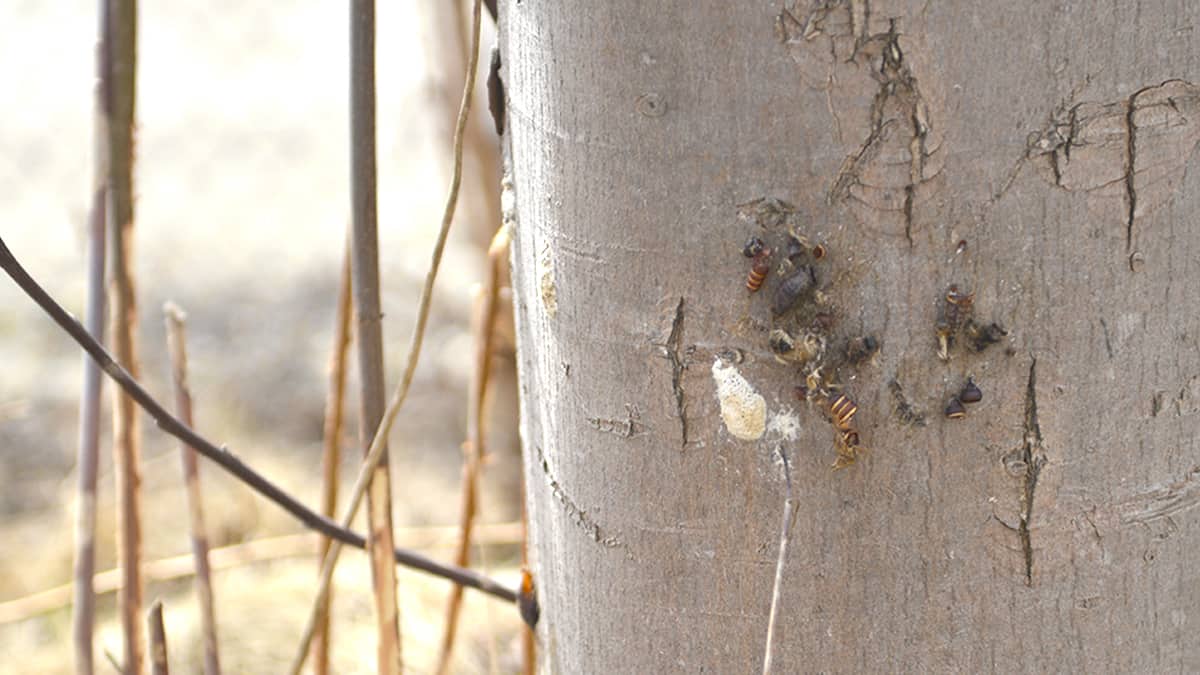With spring now upon us, warmer weather, gardening season and watching the trees come back to life are just a few things to which we have to look forward. But with the change in season comes the birth of an invasive species, the gypsy moth.
Every spring this critter bursts forth from the egg sacks laid the previous summer with a singular goal of eating the leaves on trees where they were hatched, defoliating them to the point some of the trees won’t survive.
The impact is cyclical and not uniform across the area – you can drive down one road and see defoliated woodlots and then drive down another that’s completely fine, says Albert Hovingh, principal planner and stewardship planner with the Region of Waterloo.
“It looks like it will be bad in some places and worse in others. I haven’t done a formal survey, but I’ve certainly been around a lot and looked at different woodlots and things like that, and there’s certainly some areas where there’s a lot of egg masses. So, it’ll probably be like last year: kind of gross for people in their backyards,” said Hovingh.
Scrapping away the eggs before they hatch is a first step, but there are also some natural aids in the battle against the moths.
“I also did notice last summer that there were signs of a fungus, and there’s also a virus that impacts the gypsy moth… it’s kind of a naturally occurring phenomena fungus. It does affect them, but it also depends a bit on the right conditions. For any fungus to grow, it’s got to be kind of moist and things like that. So, depending on what happens in the spring, that may encourage that growth, but then there’s also this virus and again that’s also naturally occurring.”
Gypsy moths, first introduced to North America more than a century ago, create chaos within woodlots and other forested areas each year. In their caterpillar form, they eat trees to the point of defoliation, before entering their “adult” stage and cocooning themselves before becoming a moth. It is this stage where they lay their egg sacks – which can contain up to 1,000 eggs – before dying.
One acceptable way to get rid of the moths is by using Bacillus Thuringiensis (Btk). However, Hovingh says the region does not spray for the moths as the problem does not seem that widespread here – in order for them to consider such an act would require about four years of extreme defoliation.
While the woodlots and other areas of trees will not be looked after by the region, residents can do something on their own properties – and expand their work if they wish.
Some acceptable practices include going out before the caterpillars hatch and scraping the egg sacks into a bucket of soapy water; while another would be to apply burlap and a “sticky barrier band” to the trunks of potential host trees and going out to remove the caterpillars each day.
Hovingh says these are steps that can be taken on a small scale, however, because so many eggs are held within a sack, missing even one could still leave a tree infested with 1,000 or more caterpillars.
While the defoliation of trees is a problem, Hovingh says the one upside to something like this happening early in the spring is that the “understory plants” get extra sunlight earlier in the season and have the ability to grow. He says another upside is the fact that the digested leaves turn into fertilizer from the caterpillar, which in turn helps ground vegetation earlier in the year.
Click here for more information on the gypsy moth and ways to get rid of them.










